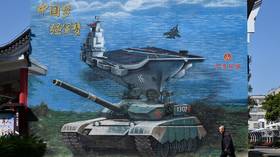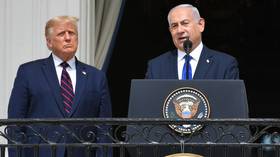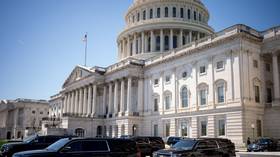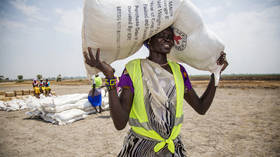Dark undercurrents: Even as tensions ease, the US is still preparing for war with China over Taiwan

The year 2024 has been muted when it comes to tensions between the US and China so far. Despite the looming unpredictability of the US election, high politics in Washington has been overwhelmingly focused on Israel and Ukraine, and since Joe Biden and Xi Jinping met in San Francisco, things have been relatively calm between Washington and Beijing.
But that does not mean there is nothing going on underneath the surface. While the US has avoided high level antagonism with China for the time being, Washington’s ambition to contain Beijing, as well as preparing for a potential war over Taiwan, remains as steadfast as ever. Recently, it was reported that the US has permanently placed special forces in the Taiwan-governed island of Kinmen, where they are said to be training local soldiers.
Kinmen is essentially the last territory that can be considered ‘part of the mainland’ still ruled by Taiwan, officially known as ‘the Republic of China’. Located just 20 miles or so off the coast of Fujian province, it is isolated from the island of Taiwan itself and has subsequently become a target of Chinese retaliation against Taipei over the years, especially during the Mao era. In an invasion scenario, it is expected that Beijing would seize Kinmen Island first, making it a stepping stone and therefore the first line of defense.
Although the US formally committed in the three communiques with China in 1972 not to place soldiers on the island, it has gradually been undermining its commitment to the One-China policy by increasing military assistance to Taipei in various forms, despite claiming that it “does not support independence” in the process. In doing so, the US strategy has been to claim it supports the ‘status quo’, ‘opposes the use of force’, but nonetheless is attempting to move the goalposts in Taiwan’s favor by preventing reunification from occurring on Beijing’s terms.
This has been made vastly easier by the Democratic Progressive Party (DPP) repeatedly winning elections in Taiwan, even though it has lost control of the island’s legislative Yuan. China has nonetheless insisted that reunification will be completed, by force if necessary, and has aimed to put pressure on the island, advancing its own military presence and capabilities. The US in turn has moved to sell more and more weaponry to Taipei, attempting to hold back the change in the balance of power and communicate the message that conquest will come with severe costs for China, even if it succeeds.
For the US, the military stakes of losing Taiwan are incredibly high. While US support for Taiwan is communicated in the typical ideological terminology of ‘democracy’, in reality, the island’s fate will ultimately determine who is the hegemon of the Asia-Pacific. This is because Taiwan is an integral piece in the ‘first island chain’ which spans down all the way from the islands of Japan to the South China Sea. Whoever controls Taiwan island subsequently controls all the critical shipping lanes on China’s periphery, and this also can militarily checkmate Japan itself, which is precisely why Taiwan became Japan’s first colonial acquisition in 1895.
In other words, if Taiwan is lost, the South China Sea is also lost and therefore America’s ability to project military power in this area and against China itself is also severely reduced. The geopolitical effect of such an outcome is that the neighboring nations of Asia would ultimately be resigned to accepting Chinese dominance, with the role of the US reduced, allowing Beijing to subsequently build its own regional subsystem as was seen in the days of Imperial China. Thus, Taiwan itself has become a symbolic struggle over the region’s future and of course a matter of ‘destiny’ in terms of China’s own rise and revival, as framed by Xi Jinping.
Therefore, even as US-China tensions are not as high now as they were, the Taiwan issue is going to keep ticking with developments like this under the surface. We should not expect either side’s position on the issue to change, especially when the more provocative pro-independence president, William Lai, takes office. The US may not engage in extreme stunts such as Nancy Pelosi’s visit to the island again, but they will continue to move incrementally to change the status quo in a way to block reunification and stifle China’s ambitions, and Beijing will ultimately be forced to respond to that and contemplate how it can play its own hand, wary of the consequences it might face.
The statements, views and opinions expressed in this column are solely those of the author and do not necessarily represent those of RT.













